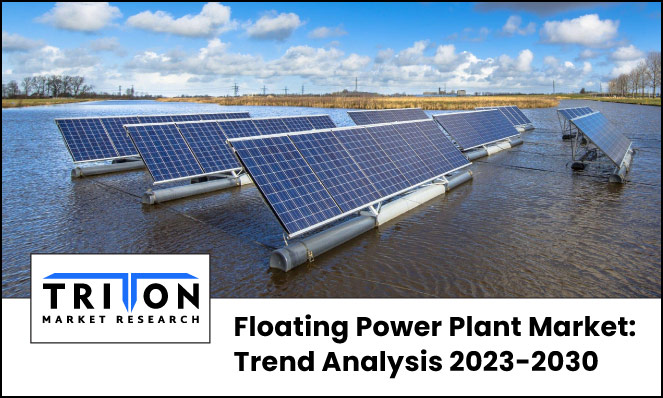



06, July 2023

Floating power plants are a viable solution for powering island countries at lower costs than laying subsea cables. They can be installed on vessels like ships or barges, harnessing renewable energy sources such as solar, wind, hydro, and liquefied natural gas. The increasing demand for electricity in island countries drives their adoption, while complexities and environmental concerns with floating nuclear power plants may hinder the market growth. However, growing investments by Asian countries like India, Japan, Australia, and China in deploying plants with diverse energy sources offer ample opportunities for market players in the Asia-Pacific floating power plant market.
The global floating power plant market has seen growth in recent years, engaging the attention of various industries and stakeholders. In terms of revenue, the market is valued at $10,010.11 million in 2022 and is projected to grow at a CAGR of 10.74% throughout the forecast period.
Floating power plants on ships are gaining popularity due to their flexibility, mobility, and ability to deliver electricity to remote or disaster-stricken areas. They are also ideal for coastal regions with limited land availability. Moreover, these power plants utilize renewable energy sources like solar and wind power, contributing to the global shift towards clean energy. Their modular design allows scalability and easy relocation to meet changing energy demands. Ship-based floating power plants have made significant technological advancements, improving their efficiency, scalability, and adaptability to marine environments.
One notable example is Karpowership, a Turkish company specializing in ship-based energy solutions. They have developed power barges installed on converted cargo ships, capable of generating electricity in various locations. These power plants have seen improvements in power generation, fuel efficiency, and environmental impact reduction thanks to more efficient gas turbine engines and advanced energy management systems. The modular systems Karpowership developed enable quick power capacity expansion by integrating additional barges.
Floating power plants on ships are now widely used for emergency power during natural disasters, temporary power generation in remote areas, and construction projects. They are particularly valuable in regions where fixed offshore wind farms are not feasible, allowing the utilization of wind energy in deeper waters. West Africa, specifically Ghana, is witnessing a resurgence in ship-based floating power plants to address energy challenges in remote coastal areas and islands. Karpowership has successfully deployed these plants in Ghana, providing reliable and flexible power generation, supporting the country's energy infrastructure, and driving economic growth.
Ship-based floating power plants use renewable energy sources to generate electricity. These energy sources renew naturally within a human period, making them sustainable and environmentally friendly alternatives to traditional fossil fuel power generation. Using these plants based on renewable energy offers several advantages over land-based plants. They can be easily transported and relocated to areas with high energy demand or limited land availability.
In 2020, 38% of electricity in the European Union was generated from green energy, with wind energy being the most widely used renewable energy source. Hydropower and solar energy also contribute significantly to the renewable energy mix.
As per the Triton Market Research, the renewable segment is expected to grow with the fastest CAGR of 11.20% during the forecast period. This is attributed to the increasing global awareness and adoption of clean energy sources, government incentives, and advancements in renewable technologies.
OEMs play a central role in floating power plants on ships because they provide the necessary expertise, technology, and equipment to design, build, and integrate power generation systems onto the ships. Working closely with project developers, they deliver customized solutions that meet specific requirements. By supplying high-quality components, OEMs ensure seamless integration of renewable energy and increase efficiency and reliability for the overall success of green energy initiatives.
Leading industry players like ABC Power System and XYZ Renewable Solutions drive the market forward with innovative technologies. The Hywind Scotland project, the first commercially viable floating wind farm, showcases the scalability and adaptability of power plants in deep offshore areas where fixed-bottom turbines are not feasible.
The floating power plant market has innovated sustainable solutions to meet the growing electricity demand. With the help of OEMs, these power plants can be designed, built, and integrated into ships to provide a reliable energy source. As the world moves towards cleaner and more sustainable energy sources, these plants have the potential to play a significant role in meeting our energy needs while reducing our carbon footprint. They offer a flexible and efficient way to generate electricity, making them an attractive option for the future.
High upfront costs, complex regulatory frameworks, and challenges associated with grid integration & infrastructure development are key restraints to the market.
Q2: What segments are analyzed in the floating power plant market?Segment by capacity (0 MW-5 MW, 5.1 MW-20 MW, 20.1 MW-100 MW, 100.1 MW-250 MW, and, above 250 MW) and source (non-renewable power source and renewable power source).
Q3: What geopraphies are studied in the market?North America, Europe, Asia-Pacific, Latin America, and Middle East & Africa.

Prevalent cases of terrorist attacks in today’s world is increasing the need for severe standards of security for public safety, and the global market for biometric technology scrupulously accommoda..
Prevalent cases of terrorist attacks in today’s world is increasing the need for..